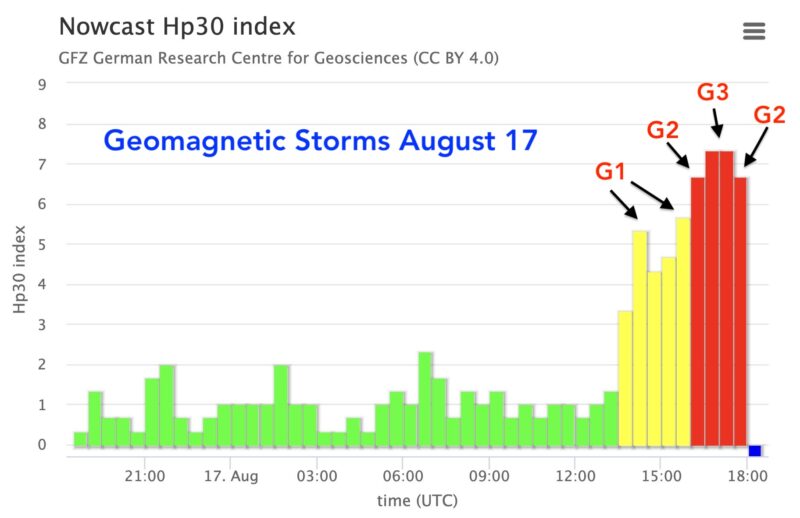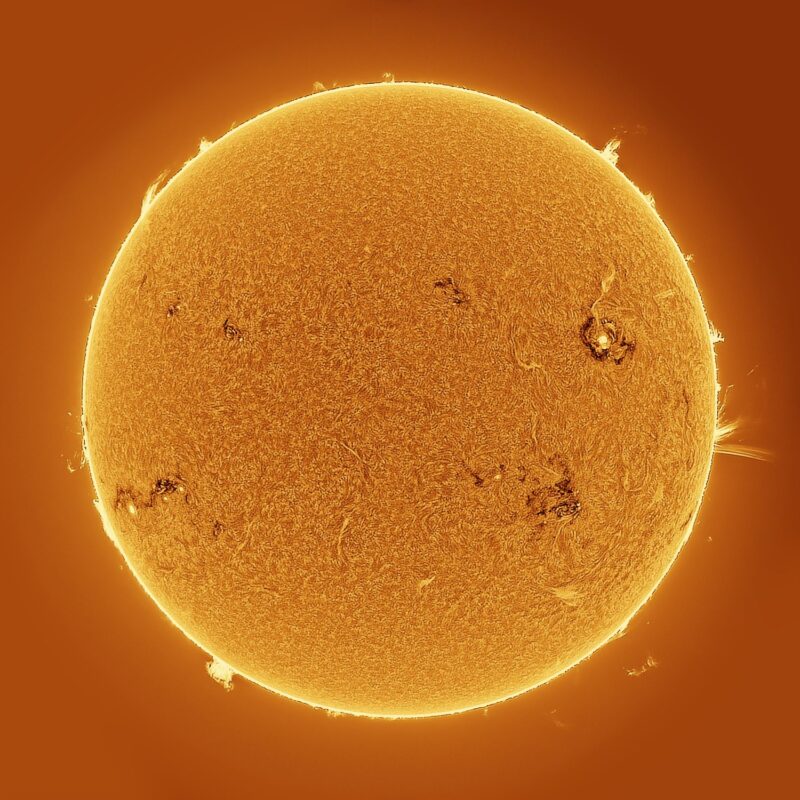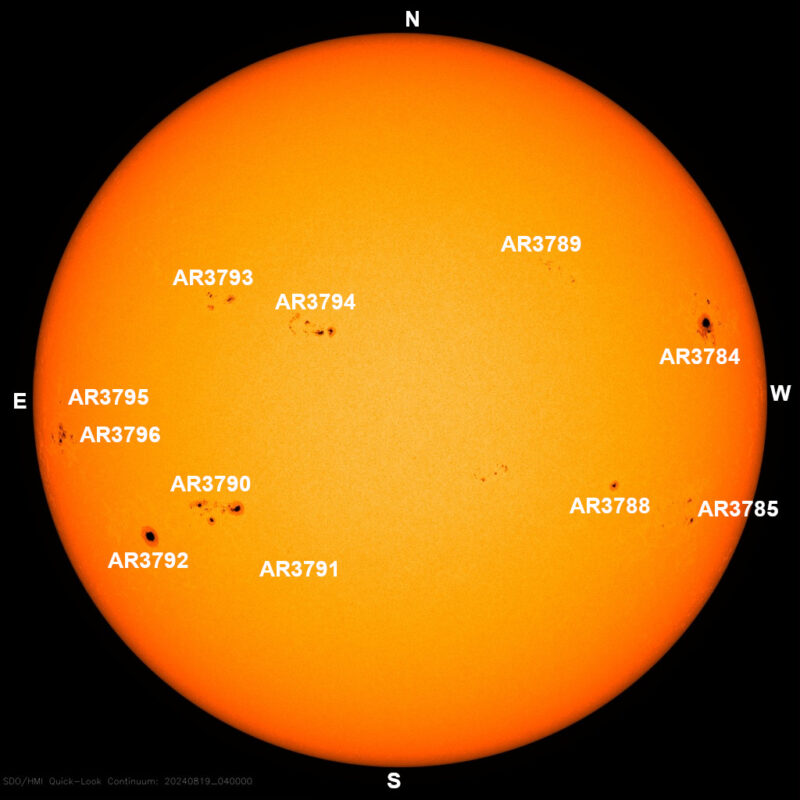
Sun news August 18: Sun-stuff strikes Earth, sparks auroras
Today’s top story: Happy Sun Day! The coronal mass ejection (CME) spawned in the August 14 X1.1 flare ended up arriving around 13 UTC on August 17. Ah nature! Sometimes so unpredictable. The impact on Earth’s magnetic environment, the magnetosphere, sparked geomagnetic storms that also exceeded expections. They briefly reached G3 (strong) levels around 17:46 UTC (midday in central North America, early evening in Europe). So the timing of this strike was unfortunate for most of Europe and the Americas, due to the pesky interference of sunlight. Parts of Russia were graced with auroral activity, though.
Last 24 hours: Meanwhile, the sun is blasting away. Sun activity has been moderate during the past day (11 UTC yesterday to 11 UTC today), thanks to six M flares. Overall, the sun produced 13 flares, the four Ms and nine Cs. The largest event of the period was an M2.4 from AR3784. It produced an R1 (minor) radio blackout over the western Pacific Ocean. AR3784 produced the most flares, three Ms and two Cs.
The list of M flares is:
• M1.1 at 11:44 UTC on August 17 from AR3785. R1 (minor) radio blackout over Africa.
• M1.1 at 21:52 UTC on August 17 from AR3790. R1 (minor) radio blackout over the Pacific Ocean.
• M1.4 at 22:06 UTC on August 17 from AR3790. R1 (minor) radio blackout over the Pacific Ocean.
• M2.4 at 02:04 UTC on August 18 from AR3784. R1 (minor) radio blackout over the western Pacific Ocean. The largest.
• M1.1 at 04:16 UTC on August 18 from AR3784. R1 (minor) radio blackout over Southeast Asia.
• M1.3 at 07:30 UTC on August 18 from AR3784. R1 (minor) radio blackout over the Arabian Sea.
AR3784 region remains the largest and most magnetically complex regon on the sun; it still has a beta-gamma-delta magnetic complexity, indicating a possibility for more strong flaring. AR3790 is a slightly calmer beta-gamma region, and the remaining sunspot regions are even simpler, either alpha or beta. In addition to the flaring, we saw some dynamic eruptions just over the northwest and western limbs. The sun has 10 active regions on its Earth-facing side today.
Next 24 hours: The chance for C flares is 99%. The chance for M flares is 70%. The chance for X flares is 20%.
Next expected CME: No new Earth-directed coronal mass ejections (CMEs) were observed in the available coronagraph imagery.
Current geomagnetic activity: Earth’s magnetic field is quiet at the time of this writing (11 UTC on August 18). Active levels and G1 (minor) storm periods are expected early today (August 18) due to the waning influence of the X1.1-associated CME that arrived midday yesterday. Mostly unsettled conditions are expected on August 19 as solar wind transitions to ambient levels. Quiet conditions are expected on August 20.
 View at EarthSky Community Photos. | Mario Rana in Hampton, Virginia, captured this filtered image on August 17, 2024. Mario wrote: “Hydrogen-alpha image of the sun with some beautiful prominences.” Thank you, Mario!
View at EarthSky Community Photos. | Mario Rana in Hampton, Virginia, captured this filtered image on August 17, 2024. Mario wrote: “Hydrogen-alpha image of the sun with some beautiful prominences.” Thank you, Mario!
 This image shows sun activity – with the most active regions labeled – as of 4 UTC on August 19, 2024. Original image, without labels, via NASA SDO. Courtesy of NASA/SDO and the AIA, EVE, and HMI science teams, with labeling by EarthSky. Today’s sun is posted by Armando Caussade. Why are east and west on the sun reversed?
This image shows sun activity – with the most active regions labeled – as of 4 UTC on August 19, 2024. Original image, without labels, via NASA SDO. Courtesy of NASA/SDO and the AIA, EVE, and HMI science teams, with labeling by EarthSky. Today’s sun is posted by Armando Caussade. Why are east and west on the sun reversed?





